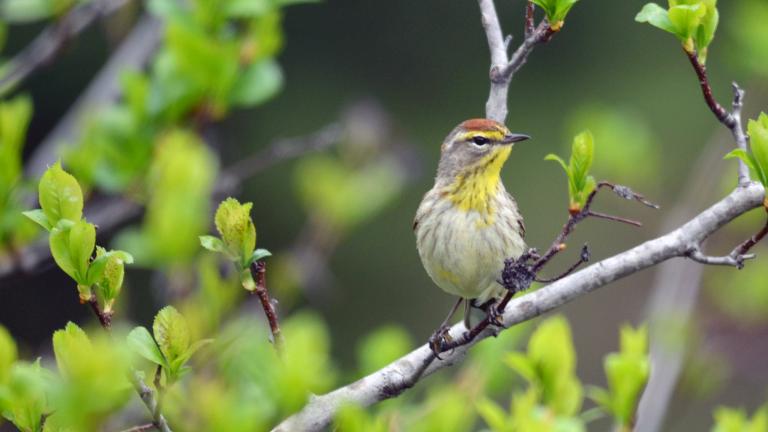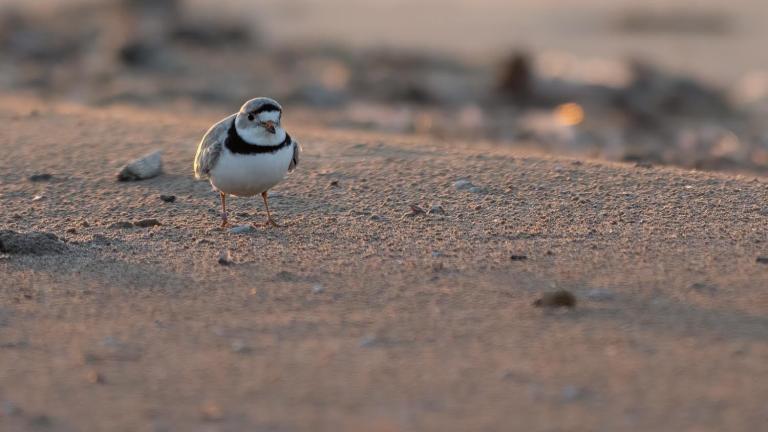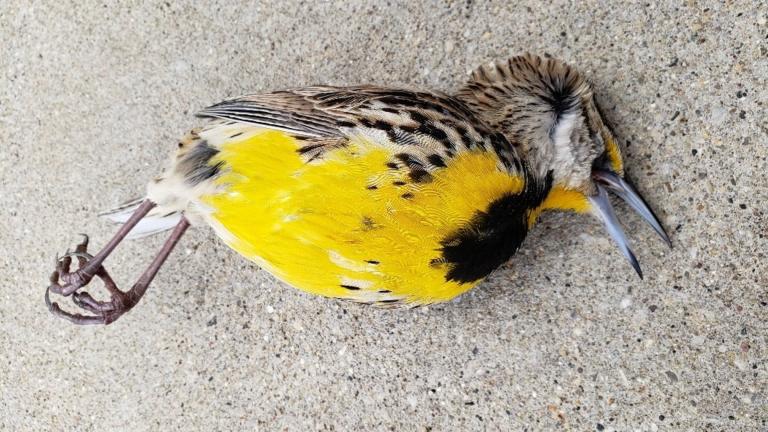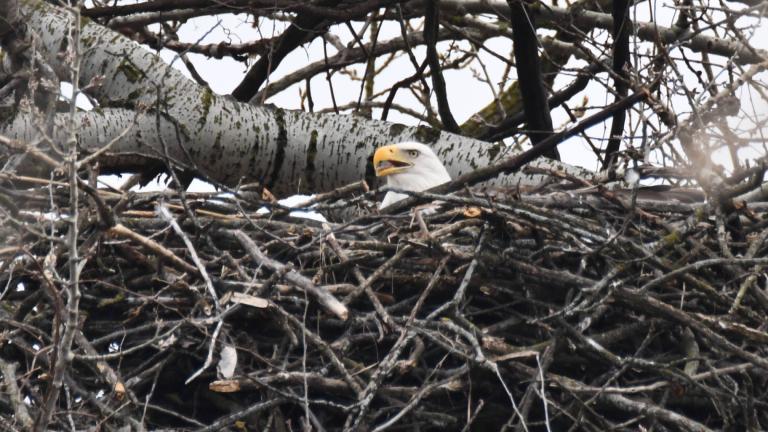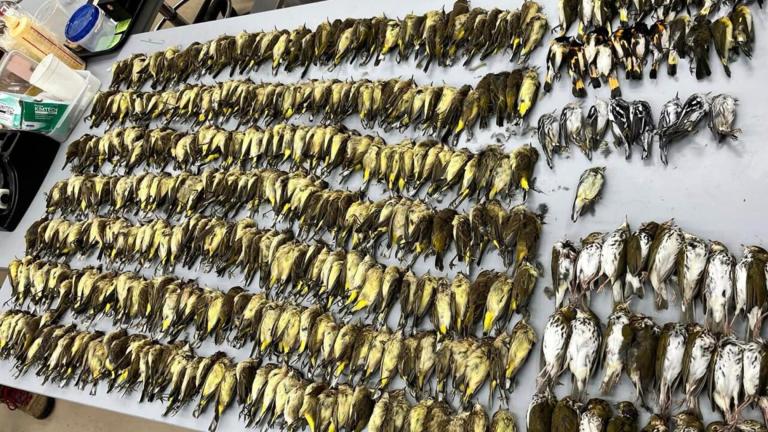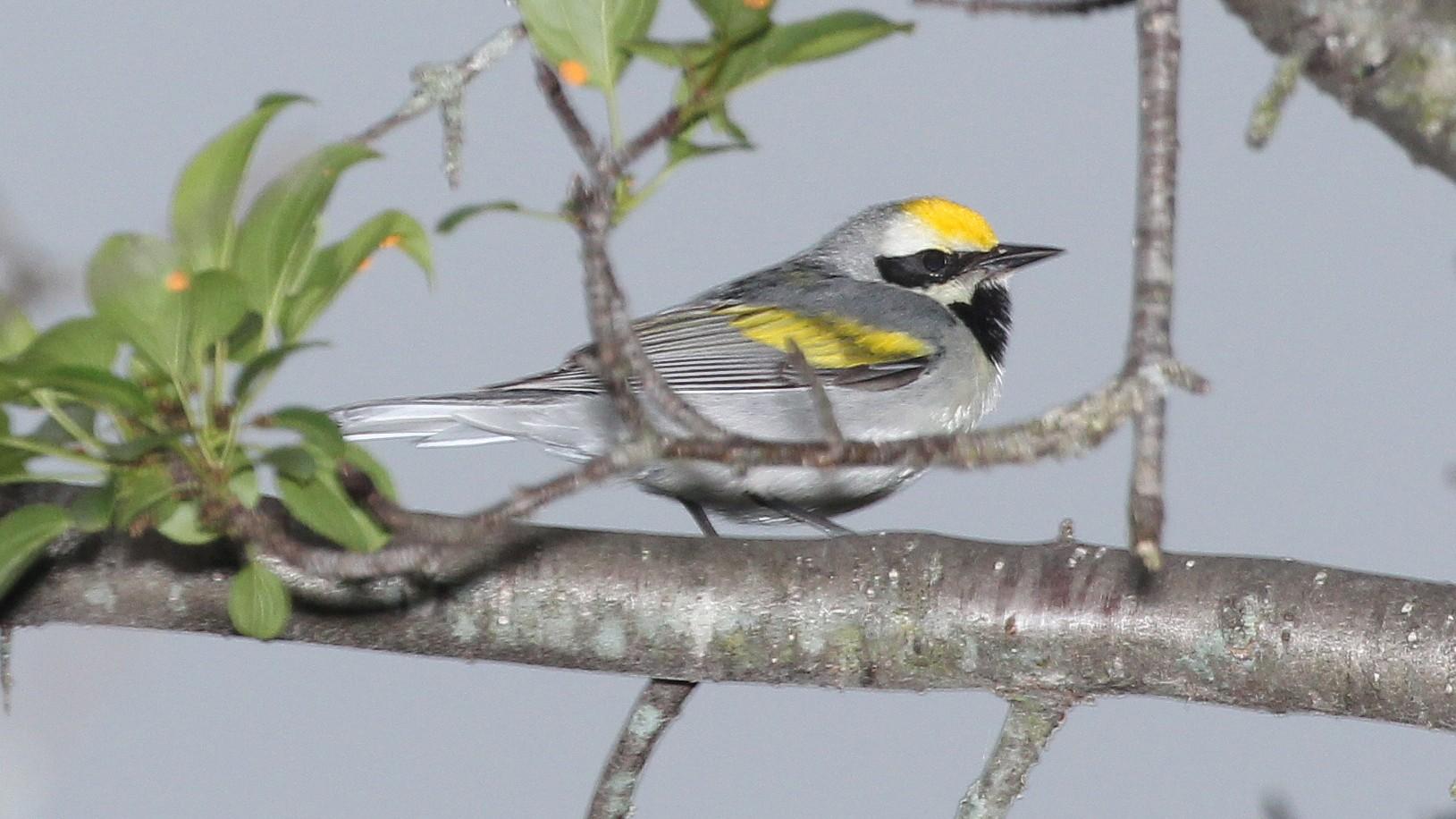 Golden-winged warbler. (Alan Schmierer / Flickr Creative Commons)
Golden-winged warbler. (Alan Schmierer / Flickr Creative Commons)
The American Birding Association announced its Bird of the Year Tuesday night, declaring 2024 the year of the golden-winged warbler (Vermivora chrysoptera), the first-ever selection of a songbird for the annual honor.
The golden-winged is a Great Lakes native that winters in Central and South America, a migratory feat all the more impressive given the bird’s size — it weighs a mere third of an ounce. Named for the golden splashes of color on its head and wings, the warbler is also identified by its distinctive “bzz bzz bzz” vocals.
Sightings of the bird in the Chicago region — where the golden-winged makes migratory pit stops on the way to and from its breeding stronghold in Minnesota — are becoming increasingly rare, with the warbler suffering one of the steepest population declines of any songbird in the last half century.
Golden-winged pairs once nested in Illinois, Indiana and Ohio, among other states, but the bird’s breeding territory has contracted dramatically. There are now two distinct breeding groups: roughly 10,000 (or 3%) of the warblers nest in Appalachia and the remainder are found in the upper Great Lakes, including Canada.
Among the factors leading to this conservation crisis: Loss of the golden-winged’s preferred nesting habitat of young forests and shrubby open areas, including wetlands. Hybridization with the blue-winged warbler, whose range overlaps and is expanding, is another concern.
Ruth Bennett, a research ecologist at the Smithsonian Conservation Biology Institute’s Migratory Bird Center, has spent the past decade studying the golden-winged’s non-breeding ecology. She spoke during the ABA’s announcement about the challenges facing the bird, as well as the efforts to restore its numbers.
Scientists are now at the point, Bennett said, where they can begin to take their knowledge of the warbler and apply it to conservation measures such as managing forests to ensure the type of regenerative new growth the golden-winged needs for nesting sites.
The Golden-winged Warbler Working Group, whose members include the Cornell Lab of Ornithology, has set an ambitious goal of growing the songbird’s population 50% by the year 2050.
“We have a lot of work to do,” Bennett said.
ABA has devoted its January issue of Birding to the golden-winged warbler and will celebrate the bird throughout 2024 by hosting various related events.
Contact Patty Wetli: @pattywetli | (773) 509-5623 | [email protected]

